1877 
- Thomas Edison invents the phonograph. It had two diaphragm-and-needle units, one for recording, & one for playback. When he spoke into the mouthpiece, the sound vibrations were indented onto a metal cylinder with tin foil wrapped around it by the recording needle in a vertical groove pattern. The first words recorded and played back were "Mary had a little lamb...", spoken by Edison. He filed for the patent on December 24, 1877.
1915 
- The 'Chicago Automatic Machine & Tool Company' invents the jukebox.
1922 
- The words "rock" and "roll", which were black slang for sexual intercourse, appear on record for the first time, Trixie Smith's "My Baby Rocks Me With One Steady Roll".
1929 
- The 78 rpm record is introduced.
1931 
- 'Adolph Rickenbacker' invents the electric guitar. Known as the Frying Pan, it was a lap-steel guitar with an electromagnetic pickup, created by Adolph Rickenbacker and George Beauchamp, in which a current passed through a coil of wire wrapped around a magnet. This created a field that amplified the strings' vibrations.
1937 
- 'Count Basie' releases "One O'Clock Jump", a cross of swing and R&B.
1938 
- John Hammond stages the "Spirituals To Swing" concert in New York City to highlight black musical styles. The stars of the show are the duo of singer Big Joe Turner and pianist Pete Johnson who kick off a national "boogie woogie" craze.
- Saxophonist Louis Jordan leaves Chick Webb's band to form the Tympany Five, a slimmed down group that begins the rhythm & blues revolution.
1939 
- Leo Mintz opens The Record Rendezvous in Cleveland, Ohio, a store specializing in race music. 12 years later he will convince DJ Alan Freed to start playing those records on the air which launches the rock 'n' roll era.
1942 
- Billboard magazine debuts the Harlem Hit Parade to chart the top singles in the "race" field, a precursor to rhythm & blues.
- Herman Lubinsky and Savoy Records begin operations in Newark, New Jersey, focusing on recording black artists.
- Illinois Jacquet kicks off the tenor sax as a primary R&B instrument with his wild solo on Lionel Hampton's "Flying Home".
- The onset of World War Two results in limited record production, particularly non-pop records, slowing the growth of rhythm & blues music until war's end in 1945.
1943 
- King Records run by Syd Nathan opens in Cincinnati, Ohio to record hillbilly music. In 1946 they begin recording rhythm & blues, becoming one of the most prominent independent labels of the next decade as a result.
1945 
- "The Honeydripper" by Joe Liggins is #1 on the black music charts for a record 18 weeks. The sexually suggestive term is an early indicator for the new direction of R&B music.
- The Bihari family forms Modern Records in Los Angeles, one of the most successful and groundbreaking R&B labels in the country.
- Cecil Gant's "I Wonder" becomes the first massive R&B hit to be significantly covered for other markets.
- Les Paul invents echo-delay, multi-track recording and many other techniques that further expand recording possibilities.
- Lew Chudd forms Imperial Records and the following year Art Rupe forms Specialty Records, both in Los Angeles, to record rhythm & blues. Each label will also make significant recordings of New Orleans R&B over the next decade and a half.
1946 
- "Choo Choo Ch'Boogie" by Louis Jordan & His Tympany Five becomes the biggest hit ever in the increasingly popular jump blues style that later leads to rock 'n' roll.
1947 
- The Ravens introduce a new form of harmony singing featuring bass vocalist Jimmy Ricks out front with tenor Maithe Marshall floating on top of the melody. Their radical reworking of "Old Man River" is the prototype for the new style of R&B group singing on the horizon.
- "Open The Door Richard" becomes the smash of the year with five different artists hitting the Top Three on the R&B Charts with a version, including its writer Dusty Fletcher. The comical song about a drunk trying to get into his apartment while his roommate is there with a woman signal a loosening of sexual mores, which become an R&B hallmark.
- Ahmet Ertegun and Herb Abramson starts Atlantic Records which will become the biggest R&B label in history.
1948 
- The term "rhythm & blues" is coined by young Billboard reporter and future Atlantic Records producer Jerry Wexler. It will replace the negative "Race Records" chart a year later which signifies the new shift in black music.
- The Orioles, led by Sonny Til, become the first of the young black vocal groups to appeal to a teenage audience, scoring a #1 R&B hit with their debut, "It's Too Soon To Know", the first rock ballad.
- Wynonie Harris's version of "Good Rockin' Tonight" tops the R&B Charts and gives rise to the popularization of that word in connotation with the music.
- Saxophonist Wild Bill Moore releases "We're Gonna Rock, We're Gonna Roll".
- The raciness in R&B becomes prevalent with such artists and songs as Julia Lee's "King Size Papa" and Bull Moose Jackson's "I Want A Bowlegged Woman" which further connect this music to a young, wild audience bent on moving away from past styles.
- June 1948 - Columbia launched the vinyl 12-inch 33-1/3 rpm album.
1949 
- The saxophone becomes the centerpiece sound of R&B and is used for its suggestiveness and its ability to incite a crowd into a frenzy as evidenced by Big Jay McNeely's smash "The Deacon's Hop" and the slowed down sultriness of Paul Williams "Hucklebuck".
- The electric guitar takes hold with the blues recordings of T-Bone Walker, John Lee Hooker and Muddy Waters and will soon become a centerpiece in R&B.
- Atlantic Records starts its run as R&B's biggest label with Stick McGee's "Drinkin Wine Spo-Dee-O-Dee".
- The Orioles continue their dominance of the market with 8 Top Ten hits during the year and frequently cause riots at their performances.
- A failing white Memphis' radio station WDIA hires Nat Williams, the first black disc jockey and changes its format to rhythm & blues which promptly turns the station's fortunes around. They also hire future singing stars B.B. King and Rufus Thomas as DJs.
- March 31, 1949 RCA Victor introduces the 45 RPM Record which is easier to produce, smaller and cheaper than the delicate 78's, which makes it more practical for younger audiences who will soon become music's primary customer. RCA Victor also offered a small inexpensive record player for $12.95 to play the new size and speed.
- Louis Jordan's massive hit "Saturday Night Fish Fry" marks the end of the jump blues dominance of the 40's, while Jimmy Preston's raucous "Rock The Joint" points towards a new horizon of rock 'n' roll for the 50's.
- Related Link: Greatest "Roots of Rock" Songs of the 1940s
1950 
- Fats Domino's first record "The Fat Man" ushers in the full-fledged rock sound.
- The Johnny Otis Rhythm & Blues Caravan takes the R&B show on the road scoring ten Top Ten hits that year, three of them chart toppers, with such vocalists as 14 year old Little Esther, Mel Walker and the Robins.
- The R&B ballad takes shape with huge smashes in that style by Ivory Joe Hunter, Percy Mayfield and Laurie Tate which bring about a much needed versatility in the emerging music.
- Arkie Shibley & His Mountain Dew Boys record "Hot Rod Race" sets the stage for white country music to meet rhythm & blues in a term to be known as rockabilly in the future.
- Atlantic Records scores its first #1 record in the decade it would come to define musically with Ruth Brown's "Teardrops From My Eyes", the biggest R&B hit for a female artist for the next 40 years.
- Related Links: Top 100 Recordings of 1950
More about Fats Domino
Billboard Top Songs by Year (1950 - 1959)
1951 
- A wave of young black vocal groups spring up with variations of the style popularized by the Orioles. The Five Keys smooth harmonies hit with "The Glory Of Love"... the Clovers combine tougher harmonies with southern-inflected blues and hit with "Don't You Know I Love You" and "Fool, Fool, Fool", kicking off a string of 15 straight Top Ten hits... the Dominoes gospel-based singing and racy lyrics land them the biggest hit of the decade with "Sixty Minute Man" which sells in such high numbers that it makes #17 on the Pop Charts as well.
- The first jukebox that plays 45 RPM records is introduced.
- In Memphis Sam Phillips records Ike Turner's band with Jackie Brenston on lead for "Rocket 88", leasing it to Chess Records of Chicago where the alcohol fueled rocker tops the charts and further cements rock's future as a raucous, exciting and dangerous style of music.
- Les Paul's dazzling electric guitar work on the #1 Pop Hit "How High The Moon" with Mary Ford allows the song to cross over onto the R&B Charts bringing together the diverse influences that would help form rock 'n' roll.
- In July, Cleveland disc jockey Alan Freed begins his "Moondog Show" on WJW, broadcasting nothing but rhythm & blues, quickly becoming a hit with young black audiences.
- Related Link: Top 100 Recordings of 1951
1952 
- Renegade white country & western swing band Bill Haley & The Saddlemen record "Rock The Joint", the first white rock song of note.
- White pop vocalist Johnnie Ray records the two-sided smash "Cry" b/w "The Little White Cloud That Cried" and his emotional wailing leads many to believe he is both black and a female as the song tops the R&B charts.
- Johnny Ace, a former piano player with the Beale Streeters, a group that included blues legends B.B. King and Bobby "Blue" Bland, records his first record in Memphis and watches it hit #1 launching him as a major R&B star.
- In New Orleans the rock 'n' roll beat is furthered by Lloyd Price's massive hit "Lawdy Miss Clawdy" with Fats Domino on piano.
- Domino's own "Goin' Home" hits #1 on the R&B Charts and becomes one of the first rock songs to scrape the Pop Charts as well, reaching #30.
- Jerry Leiber and Mike Stoller, still in their late teens, write their first hit "Hard Times" for R&B star Charles Brown, as well as the rock classic "Kansas City". Their work as writers and producers over the next decade will result in countless hits for dozens of musical legends.
- Sam Phillips starts his own label, Sun Records in Memphis, recording mostly blues musicians its first two years in business. Their first release is Johnny London's moody R&B sax instrumental "Drivin' Slow".
- On the night of March 21st, DJ Alan Freed puts on the ever rock 'n' roll show - "The Moondog Coronation Ball" in Cleveland starring The Dominoes, Veretta Dillard, Tiny Grimes & His Rockin' Highlanders featuring Screamin' Jay Hawkins, and Paul "Hucklebuck" Williams. The overflow crowds break down the doors, storming the arena where a full scale riot ensues bringing the newly coined "rock 'n' roll" music its first widespread headlines and scrutiny.
- Related Link: Top 100 Recordings of 1952
More about Johnny Ace
1953 
- Clyde McPhatter leaves the Dominoes after three years and 9 huge hits to form the Drifters for Atlantic Records who will hit #1 out of the box with "Money Honey" that summer.
- The first clear evidence of soul music shows up with the "5" Royales, an ex-gospel group that turned to racy R&B and in Faye Adams who's spiritual plea in a secular realm, "Shake A Hand" becomes an immediate R&B standard.
- Bill Haley changes his group's name to the more youthful Comets and writes the first white rock hit, "Crazy Man Crazy", reaching #13 on the Pop Charts in May, the highest position for a rock song to date.
- In June the first major integrated rock 'n' roll show is staged in Cleveland with headlining co-stars The Dominoes and Bill Haley & His Comets.
- The Orioles "Crying In The Chapel" becomes the first R&B hit to approach the Top Ten on the Pop Charts, stalling just short at #11 late that summer.
- The Rhythm & Blues Charts begin to reflect the overwhelming dominance of emerging rock 'n' roll with such hits as Big Joe Turner's "Honey Hush", Johnny Ace's "The Clock" and Ruth Brown's "Mama, He Treats Your Daughter Mean". Only one pure blues record tops the chart the entire year, a significant shift from past years when blues had a steady presence on those charts.
- 15 million rhythm & blues records are bought in 1953, while that accounts for just 5% of all records sold it begins to draw notice in the industry which fails to note the growing interest among young white audiences that will soon have a major impact on society as a whole.
- Related Links: Top 100 Recordings of 1953
More about Clyde McPhatter
1954 
- R&B music explodes into the mainstream with black vocal groups leading the crossover thanks to such records such as the Crows "Gee", The Chords "Sh-Boom", The Charms "Hearts Of Stone" and The Penguins "Earth Angel". The often crude recording techniques, amateurish vocals and sometimes nonsensical lyrics give the indication the music is just a novelty.
- Pop record companies try desperately to capitalize on the perceived fad by having white artists cover black vocal group records and the increased distribution and radio play assures many of those versions of becoming the bigger hits.
- The Midnighters cause waves when their off-color "Work With Me Annie" and its equally suggestive sequels become the most popular R&B records of the year resulting in many communities calling for complete bans on rock 'n' roll.
- Among those records targeted for widespread bans are Clyde McPhatter & The Drifters explicit "Honey Love" and "Such A Night" and the Midnighters "Sexy Ways". Despite this they all become massive R&B hits.
- 10,000 fans attend Alan Freed's first east coast Rock 'n' Roll Show held in Newark New Jersey, featuring the Clovers and Harptones. The success of it outside Freed's base of operations in Cleveland is further proof that rock 'n' roll has national appeal.
- Freed moves to New York's WINS in September and quickly becomes the city's most famous DJ, attracting massive audiences to his newly named "Rock 'n' Roll Party".
- Big Joe Turner and Bill Haley each record "Shake Rattle & Roll" and have dueling hits that stay on the charts for months on end.
- In Memphis, Elvis Presley records his first commercial record "That's All Right, Mama" July 5th at Sun Studios.
- Rock 'n' roll suffers its first tragedy as one of its biggest stars Johnny Ace accidentally shoots and kills himself playing Russian Roulette backstage at a Houston Auditorium in between shows on Christmas Night.
- Related Link: Top 100 Recordings of 1954
1955 
- After being used in the hit film about juvenile delinquency "The Blackboard Jungle", Bill Haley & The Comets "Rock Around The Clock" becomes the first rock record to top the Pop Charts, holding the #1 position for two months and remaining in the Top 100 for a then-record 38 weeks. It would be 39 years before that mark was broken.
- Crossover records start appearing on the Pop Charts led by Johnny Ace's posthumous smash "Pledging My Love". Others by Fats Domino, The Moonglows, The Platters and the first hits by Chuck Berry and Little Richard follow.
- Berry's "Maybellene" cracks the Top Five on the Pop Charts and ushers in descending pentatonic double-stops which becomes the essence of rock guitar.
- Bo Diddley's self-titled debut record tops the R&B Charts and introduces the tribal "Bo Diddley" beat to rock.
- In May the first Rock LP is released by Bill Haley & His Comets, but full-length albums with their higher prices that limit their appeal for teenagers, remain largely the realm of adult pop singers for another decade.
- The increased attention to R&B has negative impacts as well with The Midnighters facing the toughest scrutiny resulting in their final hits of any kind for four years due to radio blackballing.
- In May a Rock 'n' Roll Show in Connecticut to be headlined by Fats Domino is cancelled for fear it will lead to rioting. State police subsequently ban all further rock concerts in the state.
- Boston follows suit by assembling a record censorship board to prevent dirty rock records from being played on the air.
- With censorship prevalent, white cover records still hold the slight edge in radio play but not in sales, with Pat Boone having the biggest impact with his watered down versions of R&B hits.
- In November Elvis Presley's contract is bought by RCA for an unheard of price of $35,000.
- Rock 'n' roll music warrants a mention in the year end Encyclopedia Britannica music review, which derogatorily refers to it in racist terms as "jungle music".
- Related Links: Top 100 Recordings of 1955
More about Chuck Berry
More about Little Richard
1956 
- The Platters open the year on top of both the R&B and Pop Charts with "The Great Pretender" making it the second rock record to accomplish the latter.
- Pop vocalist Kay Starr has a huge smash that winter with "The Rock & Roll Waltz" a song that attempts to cash in on the term "rock 'n' roll" while appealing to adults rather than kids, proving the industry feels the music is a novelty.
- By spring the white cover craze peters out as Little Richard's "Long Tall Sally" bests Pat Boone's version, Fats Domino's "I'm In Love Again" destroys the Fontane Sisters tepid remake and by years end white pop singers virtually give up covering R&B hits as a result.
- Elvis Presley makes his national television debut on "The Dorsey Brothers Stage Show" in late January and a month later his first RCA record "Heartbreak Hotel" races up the charts neck and neck with his former Sun Records cohort Carl Perkins "Blue Suede Shoes" as they claim the #1 and 2 spots on the charts.
- Presley scores five #1 hits in a seven month span, causes a sensation with his explosive performance of "Hound Dog" on the Milton Berle Show, appears twice on The Ed Sullivan Show in the fall to enormous ratings and releases his first film that November.
- Rock 'n' Roll enters the movies with cheaply made "rockploitation" films with limited plots and numerous cameos by rockers singing their latest hits. The biggest and best of which is "The Girl Can't Help It" starring blonde sexpot Jayne Mansfield and featuring performances by Little Richard, Fats Domino and Eddie Cochran.
- Feedback is invented by The Johnny Burnette Rock 'n' Roll Trio on their record "The Train Kept A Rollin".
- Gene Vincent is convicted of public obscenity and fined $10,000 by the state of Virginia for singing the erotic "Woman Love" on stage.
- "I Put A Spell On You" by Screamin' Jay Hawkins sells over a million copies but faces a complete radio ban due to its "cannibalistic nature", thus becoming rock's first underground hit.
- Related Link: Top 100 Recordings of 1956
1957 
- On his final Ed Sullivan appearance Elvis Presley is filmed from the waist up though the screams from the studio audience only makes what the home viewer was missing even more suggestive.
- "Jailhouse Rock", considered the best rock film, starring Elvis Presley introduces a precursor to the rock video, as the title song has an elaborate setting in a jail cell choreographed by Presley himself.
- Bill Haley & The Comets tour Europe setting off riots and bringing rock 'n' roll to that continent for the first time.
- An Australian tour featuring Jerry Lee Lewis and Buddy Holly follows making rock a worldwide phenomenon. Lewis's performance of "Whole Lotta Shakin' Goin' On" that July on The Steve Allen Show brings rock music more reprimands as Lewis kicks over his piano stool and plays the keyboards with disturbing wild-eyed intensity. The ratings however beat the top-ranked Ed Sullivan Show for the first time that year.
- The stroll becomes the first dance associated with rock.
- Alan Freed has his short-lived televised rock 'n' roll show canceled when complaints pour in over seeing black teenage singer Frankie Lymon dancing on screen with a white girl.
- In the first move to tame down rock 'n' roll by society ABC television launches the national version of a Philadelphia program called "American Bandstand" which winds up promoting the more wholesome side of rock.
- The Everly Brothers hit "Wake Up Little Susie" is banned from the airwaves in Boston for lyrical content.
- On a tour of Australia in the fall, Little Richard sees the Russian satellite "Sputnik" descending to earth and takes it as a sign from God to quit rock 'n' roll and join the ministry.
- Related Links: Top 100 Recordings of 1957
More about Jerry Lee Lewis
More about Buddy Holly
1958 
- Elvis Presley is inducted into the Army in March for a two-year hitch overseas.
- In April singer/songwriter Chuck Willis dies of a perforated ulcer at age 30.
- In May Alan Freed is indicted by Boston authorities for inciting a riot at a recent rock 'n' roll show he promoted where the audience stormed the stage during both Jerry Lee Lewis and Chuck Berry's closing sets.
- In June, Jerry Lee Lewis's first English tour results in scandal when it is learned his 3rd wife is his 13 year old second cousin. He cuts the tour short and is blackballed by American radio and television upon his return.
- Billboard magazine begins the Hot 100, expanding the Pop Charts to allow more records to become certified hits.
- Rock's songwriting connection to its audience becomes more apparent with the hits "Summertime Blues" by Eddie Cochran, "Sweet Little Sixteen" by Chuck Berry and Leiber & Stoller's #1 hit for the Coasters "Yakety Yak", all focusing on teenagers struggles with parental demands.
- Chuck Willis's double-sided posthumous hit "What Am I Living For"/"Hang Up My Rock 'n' Roll Shoes" is the first rock record released in stereo, engineered by Tom Dowd of Atlantic Records.
- The power chord first appears in records by guitarists Link Wray and Eddie Cochran.
- Distortion for electric guitar is first used by Lowman Pauling of The "5" Royales and a primitive form of fuzz bass is found on some of their records of this time as well.
- "Hard Headed Woman" by Elvis Presley becomes the first Rock Record to go "Gold", a new designation for singles established earlier in the year.
- Related Link: Top 100 Recordings of 1958
1959 
- Buddy Holly, Ritchie Valens and The Big Bopper die in a plane crash while on tour in Clearlake, Iowa on February 3rd. It will become known as "The Day The Music Died" and memorialized in Don McLean's 1972 hit, "American Pie".
- Congress opens the payola hearings designed to squash rock 'n' roll DJ's who receive money from record distributors in exchange for airplay, a common practice in all forms of radio for years. Alan Freed is its main target and becomes its biggest casualty, as he is found guilty and taken off the air as a result.
- Radio stations respond by voluntarily putting severe restrictions on what they will play, including widely adopting the Top 40 format which limits how many songs are given approval for airing.
- Dick Clark acts quickly to distance himself from rock 'n' roll's bad image as he increasingly showcases the talentless "teen idols" on "American Bandstand".
- The rock instrumental has its biggest year ever in response to rock music facing bans for lyrical content.
- Ray Charles bursts into the mainstream after years as an R&B star with "What'd I Say".
- A new version of the Drifters are produced by Jerry Leiber and Mike Stoller who become the first to use strings and introduce Latin rhythms to rock with the hit "There Goes My Baby".
- Berry Gordy starts Tamla-Motown Records. It will eventually become the most successful black-owned and operated company in American history, not just in music, with 600 million records sold.
- Since 1955 the market share for rock 'n' roll has increased from 15.7% to 42.7% making it the fastest growing style of music ever.
- Related Links: Top 100 Recordings of 1959
100 Greatest Rock 'n' Roll Artists of The '50s
100 Greatest Rock 'n' Roll Songs of The '50s
|  | 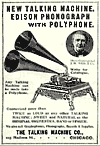
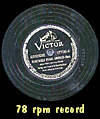
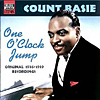


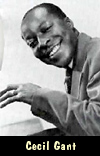



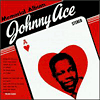
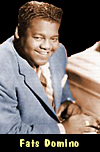

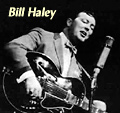
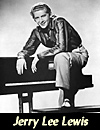

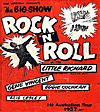
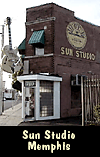

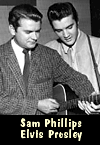
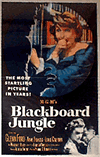

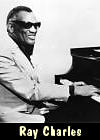




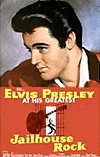
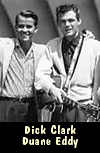

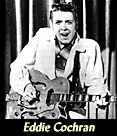

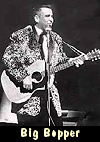
 |


































































No comments:
Post a Comment